We had a whole day of sunshine yesterday! This was amazing for sampling, views and good spirits – it was a day that just kept giving from the moment we came on deck at sunrise to the moment we turned into our hammocks at the end of a day of beauty, joy, sunshine – and hard work.
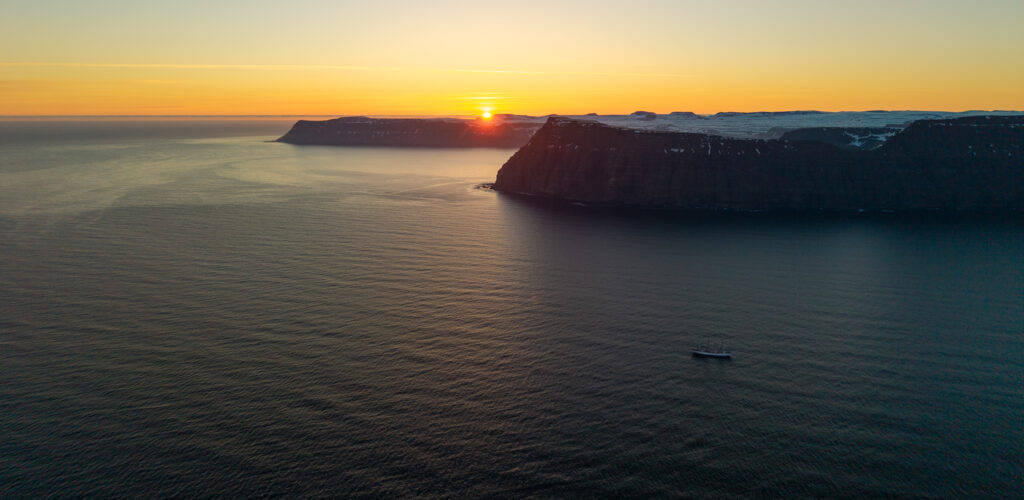
Sunrise as the Statsraad Lehmkuhl enters the Jökulfirðir Fjord. (Credits: ESA/Ocean Media Lab)
We were sampling in Jökulfijõd on northwest Iceland which was quite different from the ocean waters we have sampled before on the Ocean Training Course transect.
As part of the One Ocean Expedition, our work in this area revealed a Valhalla of ocean productivity at this time of year with a wonderful succession of different ocean biological compositions as we travelled through the serene yet stunning scenery placing the tall ship Statsraad Lehmkuhl in a unique setting.
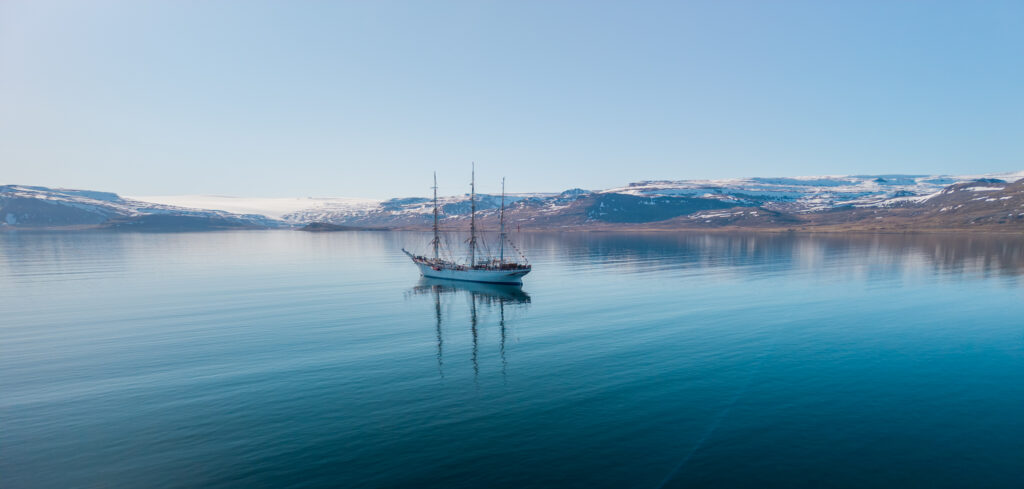
Breathtaking scenery. (Credits: ESA/Ocean Media Lab)
Just as our eyes were as wide as they could be taking in this amazing setting, the still waters were broken time and time again by the arched back and tailfin of humpback whales – a truly inspiring sight for any ocean scientist.
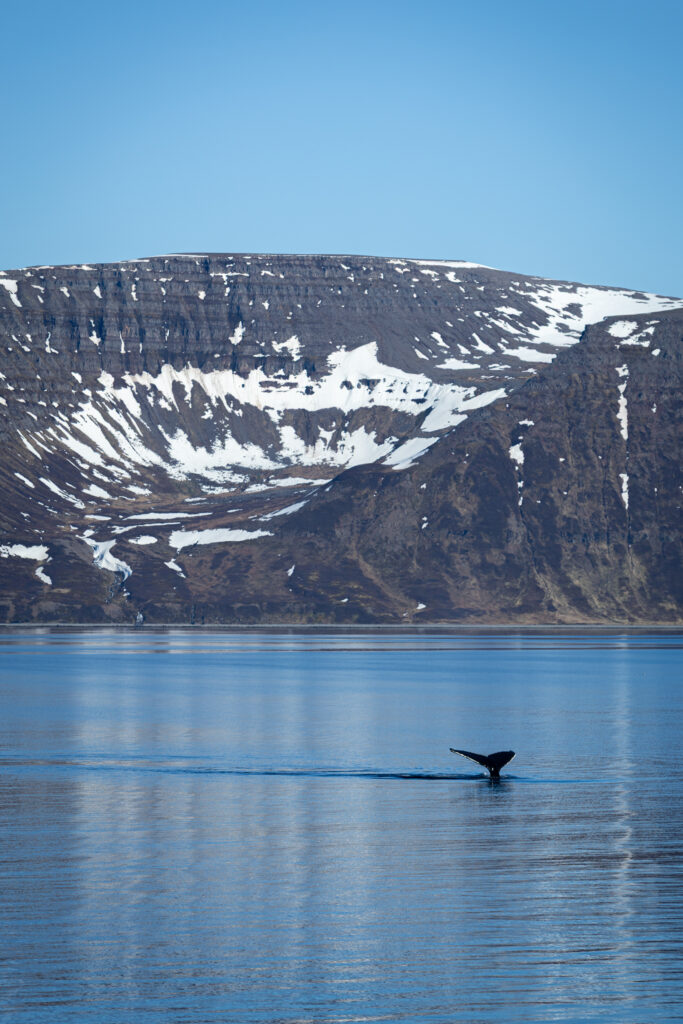
Another gift from nature when a humpback whale came and visited us in the bay, probably due to a high biomass of zooplankton. (Credit: ESA/Ocean Media Lab).
Our water sampling to 90m at the head of the Jökulfijõd was accompanied by clear blue skies and bright sunlight – the ‘food’ of phytoplankton. The composition of our samples revealed a distinct phytoplankton community living in the fjord that was itself characterised by a strongly stratified upper layer of cold fresh water overlaying a well stratified intermediate layer that sat above a bottom layer of oceanic water connected to the open ocean some 15 nautical miles away. A completely different environment to all the locations we have previously sampled during the course.
There are two quite spectacular nearly cloud-free images over Iceland, from Copernicus Sentinel-3A and -3B Ocean and Land Colour Imager (OLCI), which explain why we were collecting the crazy amounts of Plankton we found in our surface net samples.
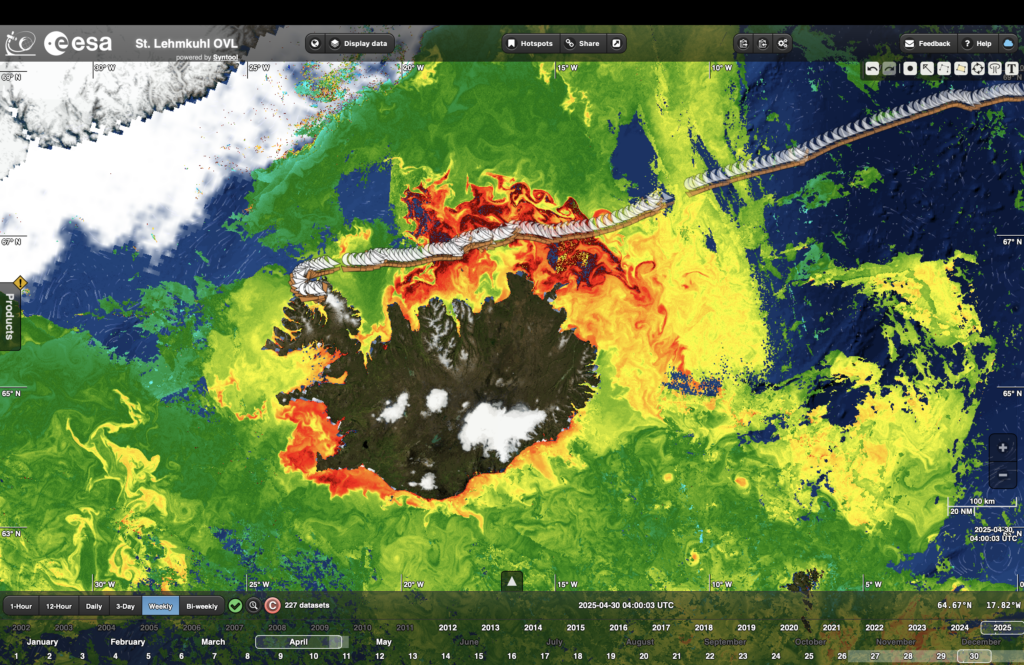
On 3 May 2025, Copernicus Sentinel-3 OLCI recorded an extreme phytoplankton bloom, on the northern side of Iceland, at the same location where the expedition made in-situ measurements with plankton nets, a Conductivity-Temperature and Depth (CTD) system, and drones. (Credit: Ocean Virtual Lab).
The images reveal the mesoscale circulation and ageostrophic circulation structures of the surface waters through ocean biological signatures. The plankton in the water have distinct spectral fingerprints in the Sentinel-3 data that allow retrieval algorithms to estimate the amount of chlorophyll-a in the plankton from 815 km above the Earth.
And there is more: the Sentinel-3 image extends to the edge of East Greenland, exquisitely captured by Copernicus Sentinel-1A earlier in the day, providing a seamless connection to the sea ice and all its intricacies.
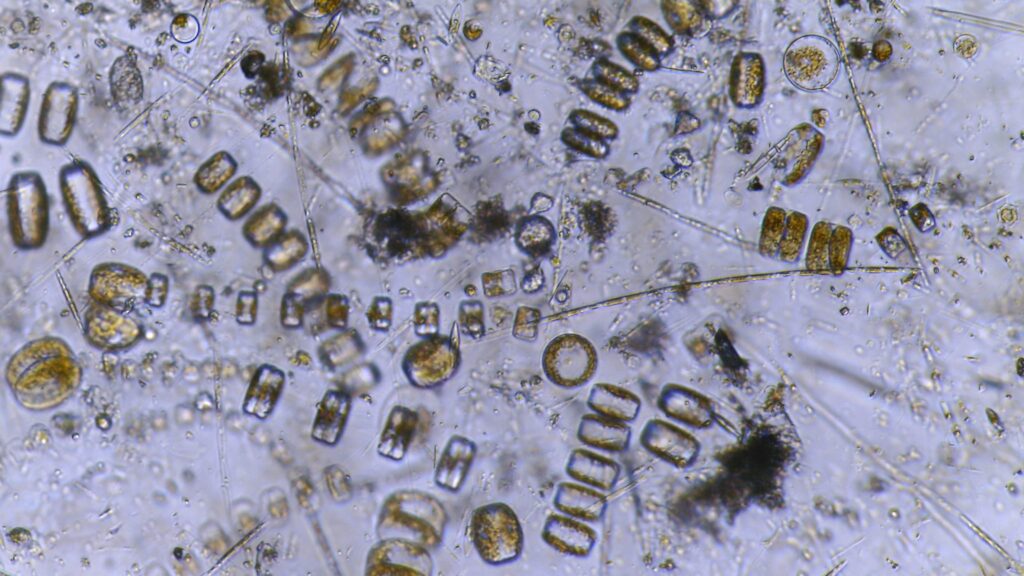
Phytoplankton seen with the Curiosity microscope: phytoplankton inside the fjord. (Credits: ESA/Ocean Media Lab)
Sometimes it all comes together on an expedition and this was one of those days where it was pure joy to be an ocean scientist. What could be a better way to train our students as future ambassadors of ocean science: our day that just kept giving.
Post from Craig Donlon (ESA)
Notes from participants on the Statsraad Lehmkuhl
“Yesterday was a beautiful and unexpected day. Perfect weather in a pristine environment. In the water we found a huge quantity of large phytoplankton cells, many forming chains. As we left the fjord, we did a plankton net that had a lot of zooplankton (amphepods, coppepods and chitognath) with much less phytoplankton than inside the fjords. The high biomass in the fjord could be attracting the whales we saw throughout the day.” – Prof. Emmanuel Boss (researcher at the University of Maine, founded by Nasa).
“I’m glad that we went into the fjord to take samples, not only because we got lucky with the weather, or the stunning views, but also because it turned out to be a very interesting place to sample for phytoplankton and particles. Our nets have rarely been as full during this expedition as they were inside this fjord. There were many diatom species, and although our nets aren’t the right size to capture them, I suspect that there must have been a lot of secondary producers like zooplankton in the water as well, which feed on this phytoplankton cornucopia! That would also explain what attracted the whale to the fjord. It’s a lovely example of the food web in action.” – Dr Saskia Rühl (scientist, Plymouth Marine Laboratory).
“My first time in a fjord and we had the amazing opportunity to sample some phytoplankton. We did some work inside the fjord while whale watching and at the fjord mouth. The stark contrast in the community unfolded before our eyes on the Curiosity microscope and this sparked more interest and questions about the ocean and its diversity. Extremely grateful for the opportunity to be on Statsraad Lehmkuhl and do science that I never thought I would do.” – Brishan Kalyan (South African Environmental Observation Network and Nelson Mandela University).
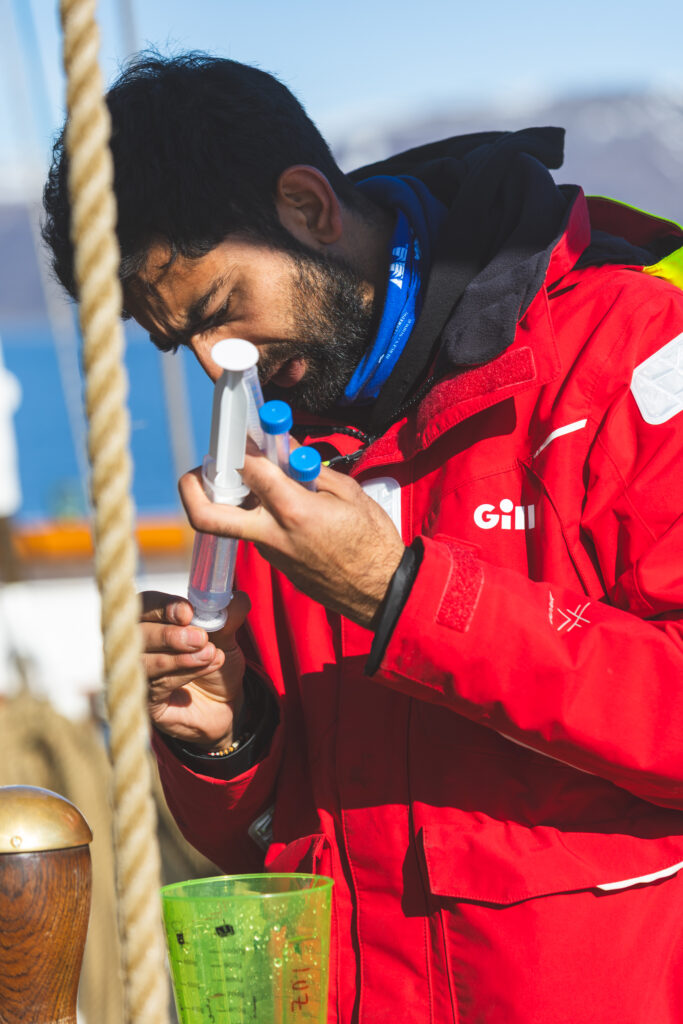
Brishan Kalyan on deck. (Credit: ESA/Ocean Media Lab).
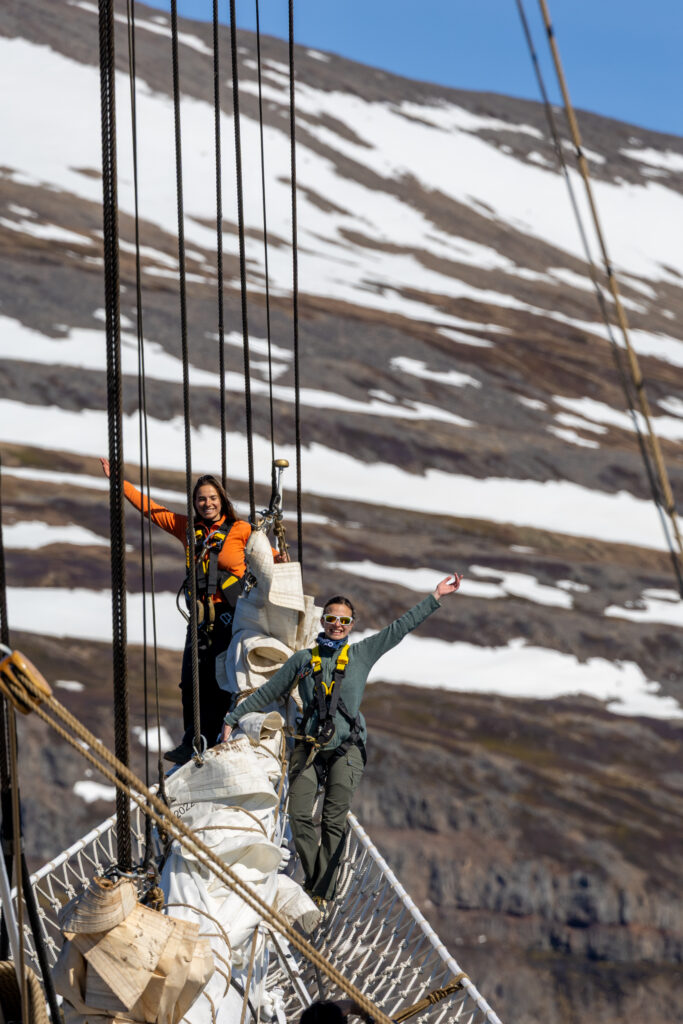
Science students participating in the Ocean Training Course on board the Statsraad Lehmkuhl. (Credit: ESA/Ocean Media Lab).








Discussion: no comments